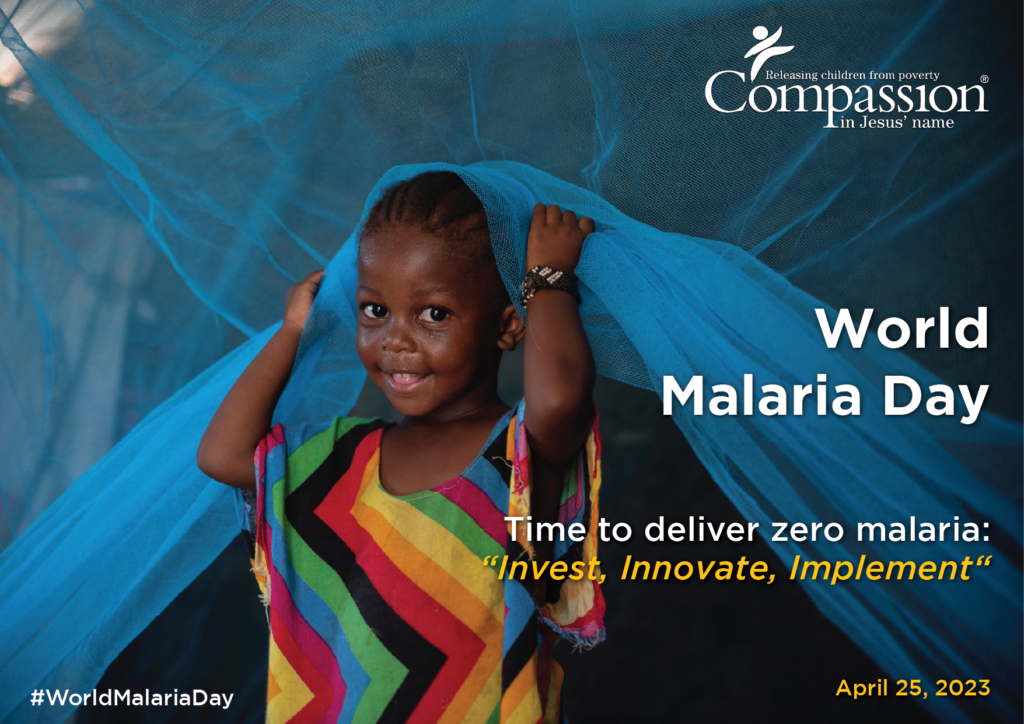
| Intervention Costs (Kes) | Number of Long Lasting Insecticidal Treated Mosquito Nets (LLINs) distributed | Program Participants reached with mosquito nets and comprehensive malaria prevention education | Caregivers reached with comprehensive malaria prevention education | Front Line Church Partners (FCPs) reached | |
| FY21 | 14,115,740.00 | 35,652 | 17,826 | 15,456 | 66 |
| FY23 | 7,937,000.00 | 20,526 | 10,623 | 8,174 | 36 |
At least 55.2% of the areas supported by Compassion International Kenya are in malaria-endemic and seasonal transmission zones. It means malaria exposure for about 69,500 program participants. A recent analysis of malaria prevalence in these zones shows about 4,395 program participants receive annual malaria treatment, translating to 366 program participants per month.
Compassion Kenya in partnership with our Frontline Church Partners (FCPs), is reducing malaria prevalence among our program participants using malaria prevention interventions that have significantly contributed to reducing malaria mortality and morbidity among the registered children and their households. Malaria is a preventable and treatable disease that requires a multi-faceted approach to combat it effectively.
We are implementing a malaria prevention intervention worth Kshs 7,937,000.00 across 36 churches in malaria-endemic zones like Kakamega, Narok, Kwale, Mombasa-Kilifi, and Siaya-Kisumu, reducing the direct and indirect healthcare costs for malaria treatment by households. The funds have supported appropriate malaria treatment, intermittent preventive treatment in pregnant women and infants (IPTp and IPTi), purchase, and distribution of Long Lasting Insecticidal Treated Mosquito Nets (LLINs) to registered children in malaria-endemic zones and integration with other malaria prevention interventions.
We have distributed Long Lasting Insecticidal Treated Mosquito Nets (LLINs) to 10,623 program participants (who each received two nets). We also collaborated with local health professionals to coordinate malaria prevention education.
The intervention has reached 10,623 children and youth and 8,174 caregivers through comprehensive malaria awareness training. It will bridge the gap in seeking timely and appropriate malaria treatment, prescribed drug adherence, and malaria environmental prevention at the household level.
Aside from the distribution of Insecticide Treated Nets, eradicating malaria deaths and ill health requires timely and effective diagnosis and treatment, combined with malaria prevention interventions. There is also a greater need for government and organizational collaborations tracking malaria-related data to enable the timely reach of the most vulnerable.

